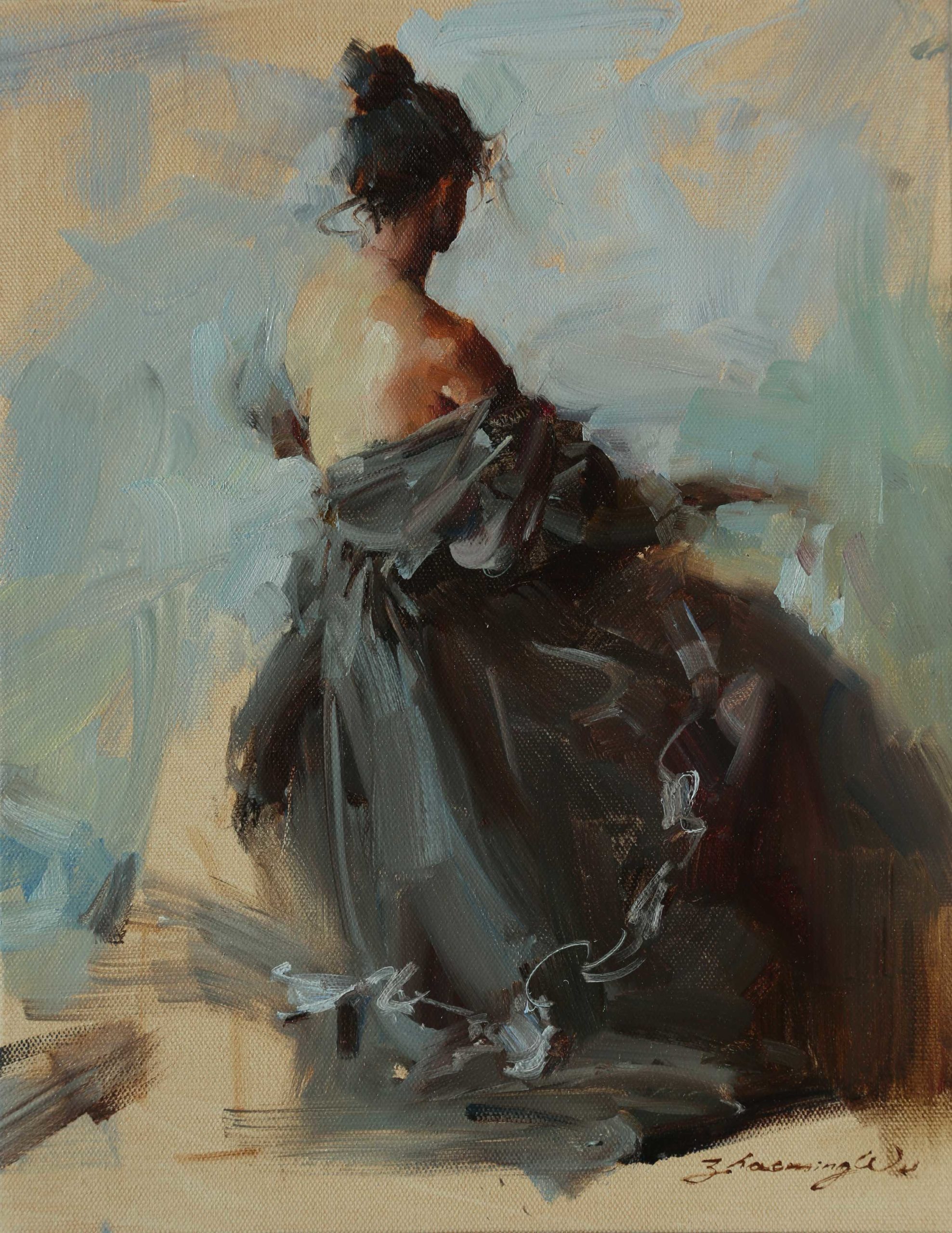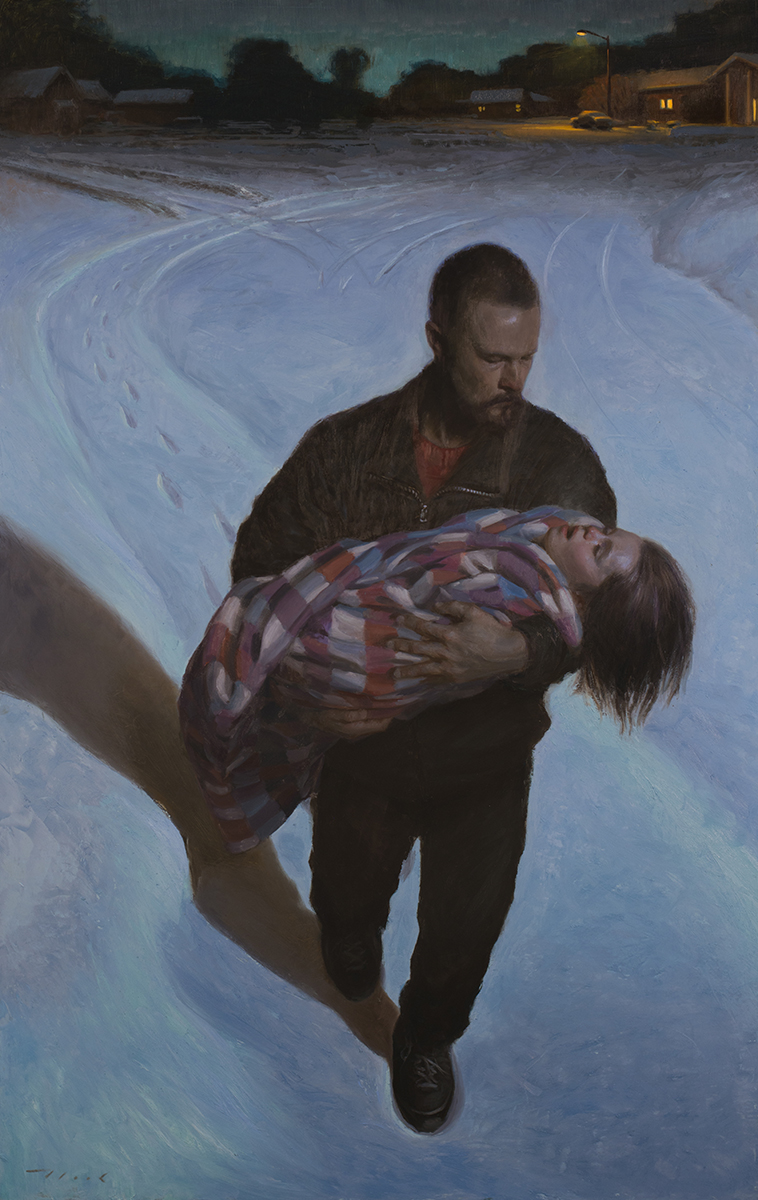The Impact of Figurative Oil Painting on Modern Art and Culture
The Impact of Figurative Oil Painting on Modern Art and Culture
Blog Article
The Development of Figurative Oil Paint: Comprehending Its Historical Value and Modern Interpretations
The advancement of metaphorical oil paint works as a compelling lens via which to check out the interplay between imaginative expression and historical context. From the meticulous naturalism of the Renaissance to the stirring power of the Baroque, each age has contributed layers of definition and method to this ageless tool. Contemporary musicians, drawing from this abundant heritage, are currently reinterpreting the human figure in ways that test conventional narratives. As we discover these makeovers, one need to consider how the discussion in between existing and previous informs not just creative practice but also social reflections in an increasingly intricate globe.
Origins of Metaphorical Oil Paint
The beginnings of figurative oil painting can be traced back to the very early Renaissance in Europe, particularly in the 15th century. The advancement of oil paint enabled for higher deepness of shade and information, improving the realistic look and vibrancy of their job.

In this transformative era, numbers were usually shown within contextually abundant environments, showcasing not only their physical attributes however likewise their mental states. Pioneers such as Jan van Eyck and Titian harnessed the tool's adaptability, utilizing layering techniques to attain brightness and structure. This innovation helped with the portrayal of detailed textiles and the subtleties of complexion, adding to the growth of portrait and narrative scenes.
Moreover, the Renaissance emphasis on humanism cultivated a recognition for individuality, which consequently affected musicians to create even more relatable and vibrant figures - figurative oil painting. Therefore, metaphorical oil paint arised as a powerful vehicle for narration and psychological involvement, preparing for future creative movements and designs
Key Historic Activities
Considerable historic activities have actually shaped the advancement of figurative oil paint, each adding unique approaches and strategies that expanded the medium's opportunities. The Renaissance marked a turning point, stressing realistic look and the human form, with artists like Leonardo da Vinci and Michelangelo pushing the boundaries of physiological accuracy and perspective. Following this, the Baroque age brought dramatic contrasts of light and shadow, exhibited by Caravaggio, who infused spiritual themes with extreme emotionality.
The 19th century presented Romanticism and Realistic look, where musicians such as Delacroix and Courbet challenged classic suitables, concentrating on individual expression and everyday life. The advent of Impressionism additionally reinvented the tool by stressing the impacts of light and color, causing a separation from traditional representation.
In the very early 20th century, activities like Expressionism and Cubism redefined metaphorical paint through abstraction and the exploration of emotional deepness. Each of these motions not just reflected the social changes of their times but likewise prepared for modern interpretations. The interplay in between these historic activities has developed an abundant tapestry of philosophies and styles, affecting contemporary musicians in their pursuit of capturing the human experience on canvas.
Techniques and Materials Evolution

Throughout the Baroque period, strategies such as chiaroscuro and sfumato arised, enhancing the psychological resonance of figurative structures. Artists started to trying out glazes and impasto, adjusting texture and luminance. By the 19th century, developments like using pre-mixed paints in tubes transformed accessibility, enabling musicians to paint en plein air and catch the fleeting results of light.
The 20th century saw the introduction of artificial pigments and mediums, which broadened the scheme and changed the uniformity of oil paints. Furthermore, the expedition of brand-new application techniques, such as combination blades and brushes of varying tightness, more varied artistic expression. Collectively, these improvements mirror the developing relationship between products, techniques, and the artistic vision intrinsic in metaphorical oil painting.

Contemporary Analyses
Contemporary interpretations of figurative oil painting show a dynamic dialogue between tradition and development, where artists challenge established standards and discover varied motifs. This evolution manifests in various ways, as modern musicians mix classic methods with contemporary concepts, frequently dealing with social, political, and personal stories.
Several professionals draw ideas from historical jobs, yet they infuse their pieces with modern perspectives, using the human form as a lorry for commentary on culture, identification, and sex. Artists progressively try out abstraction, distortion, and mixed media, which enables a wider interpretation of the figure and its context.
Moreover, making use of vibrant shade palettes and unconventional structures usually offers to disrupt conventional checking out experiences, provoking critical involvement from audiences. This change in focus expands beyond visual appeals; it mirrors an expanding understanding of the intricacies of human experience in an interconnected globe.
As metaphorical oil painting remains to progress, it remains a crucial medium for checking out the subtleties of contemporary life, embodying both a regard for heritage and a commitment to dynamic idea. The outcome is a rich tapestry of expression that resonates with the intricacies of the modern human problem.
Influence On Modern Art
The influence of figurative oil paint on modern art is profound, as it her latest blog has consistently inspired a myriad of artistic motions and methods throughout the 21st and 20th centuries. From Expressionism to Surrealism and past, the expedition of the human figure has remained a main theme, allowing musicians to communicate complicated feelings and stories. This focus on metaphorical depiction has actually led to a re-examination of conventional strategies, resulting in innovative approaches that blend realistic look with abstraction.
Additionally, modern artists have embraced metaphorical oil paint as a way to deal with social and political issues, using the medium to challenge assumptions of society, identity, and gender. The renewal of rate of interest in figurative operate in current years shows a yearning for connection in an increasingly electronic globe, where human experience and emotion are critical.
Additionally, the discussion between figurative oil painting and modern-day art appears in the works of musicians such as Kehinde Wiley and Jenny Saville, who make use of historic references while infusing their pieces with modern importance. Eventually, metaphorical oil painting continues to form and redefine modern-day artistic expression, emphasizing its long-lasting importance in the art world.
Verdict
The development of figurative oil paint underscores its historic relevance and adaptability throughout different artistic activities. From the naturalism of the Renaissance to the recommended you read emotive expressions of the Baroque and the innovative techniques of modernity, this tool has actually continuously transformed. Contemporary analyses show lively colors and unusual compositions, promoting important interaction with political and social themes. Eventually, metaphorical oil paint stays a crucial tool for checking out the human experience, resonating profoundly in today's electronic landscape.
The development of metaphorical oil paint serves as an engaging lens through which to take a look at the interaction in between artistic expression and historical context.Considerable historical motions have actually formed the evolution of figurative oil painting, each contributing distinct approaches and strategies that expanded the medium's possibilities.As historical motions shaped the trajectory of figurative oil painting, the methods and products used important site by musicians have actually additionally undertaken substantial makeovers. figurative oil painting.The impact of figurative oil painting on contemporary art is profound, as it has continuously influenced a myriad of creative motions and methods throughout the 20th and 21st centuries.The evolution of metaphorical oil painting underscores its historical importance and versatility across various artistic movements
Report this page